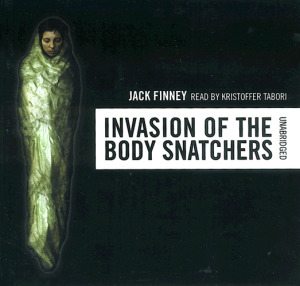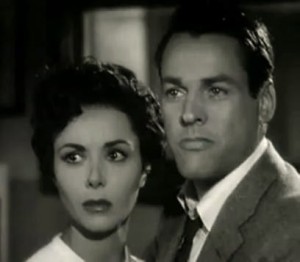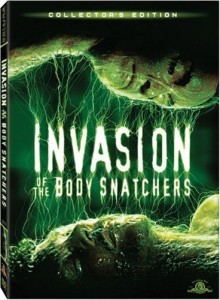 A Timeless, Chilling Science Fiction Classic
A Timeless, Chilling Science Fiction Classic
Author: Jack Finney
The classic 1955 novel that spawned two major motion pictures and a vast cult following, Invasion of the Body Snatchers focuses on the creeping horror of the barely perceptible. Dr. Miles Bennell, the woman he loves, and his two close friends are seemingly the only people in the sleepy town of Mill Valley who are aware of the subtle changes around them. Everyone seems the same – and yet not themselves. The town is beginning to deteriorate and beneath the placid surface, something cold and unfeeling is infecting and transforming the citizens. Giant plant pods, discovered on the outskirts of town, are like nothing anyone has ever seen before and these pods are able to duplicate, exactly, all life forms they come in contact with. As the sentient pods begin to spread and transform the once human inhabitants of Mill Valley, it’s a race against time for Miles and his friends to seek outside help before the town closes down and the pods spread further.
Many people know, or at least think they already know, the classic story of alien invasion: a race of space parasites travel over millenniums pushed by the sun’s rays from planet to planet until landing, by happenstance, in Mill Valley where they attempt to survive. A chance encounter by Miles’ friend with a pod forming a duplicate leads to the revelation of the sinister invasion, spawning questions and a story of paranoia based on the half seen and half understood which heightens the sense of realism and draws the readers into the characters’ own questioning of what they have seen and of what is actually possible. The self-delusions, explanations, fears, and eventual acceptance of the pods provide an explanation for the outbreak around town of psychiatric disturbances: people claiming that their relatives are not really who they seem and then, days later, calmly stating the opposite. The manner in which readers are imbedded in the minds of the characters draws the horror closer and makes the impossible quite plausible as Miles goes through a logical progression of thought and asks the questions that we, as readers, wonder, further building that sense of great storytelling which has put The Body Snatchers into classic status.

1956 – By trailer screenshot (Walter Wanger Prod.) (Invasion of the Body Snatchers trailer) [Public domain], via Wikimedia Commons
The novel focuses less on the aspect of sleep (not to say that it still isn’t a major component) and more on the speculation and sheer panic of the characters. Overall, it’s mostly seamless, despite one nonsensical scene where everyone flees town, terrified by continual encounters with popping, morphing pods, only to come back to a dangerous place the very next day (a wise choice for removal in both films). Otherwise, the novel is certainly more character driven and brings us closer to the character of Miles and Becky, personalizing the feelings of paranoia and also amplifying a sense of the thriller as both Miles and Becky fight their former friends and family in an attempt to save their town and keep the contagion from spreading. More time is actually spent talking to the alien beings and readers get a fuller and better explanation of just who (or more accurately what) the pod people actually are and how they feel about taking over Earth. This scene (many recall from the movie) was accurately brought over, but the novel gives far more satisfaction and an interaction for which fans have been longing. Not to mention, we get to see more pod popping action and just hearing those sounds and being in the mind of Miles as it is all happening makes everything seem more desperate and closer.
The breathlessness of the short novel accurately captures the sense of speeding time, mirroring the conditions under which Miles and Becky find themselves. How can one make decisions so quickly? How can everything go so terribly so soon, and how can an alien invasion be accepted, much less comprehended, understood, and fought against in so little time? The writing leads to varying emotions as the characters jostle between disbelief, fear, exhaustion, and hope. The audio CD, read by Kristoffer Tabori. Siegal’s (who directed the original film) son, heightens this sense, capturing the expressiveness of Miles and the turmoil of each moment. Never gory, but always very visual, Tabori brings alive Jack Finney’s words and opens up a world where anything is possible and where, by the end, we believe along with Miles in these body snatchers and their fantastical, yet brilliant scheme to irradiate the human race, slowly, one hidden pod at a time.
 What is perhaps so surprising about the novel is the ending which was is not depicted in either movie. The conclusion of the novel is very much upbeat which, depending on your prospective, is either better or worse. It’s certainly less terrifying, although it does give readers some long term information on the pod people. After being so close to Miles, its satisfying on a character basis since, through the duress of extreme emotion and countless sacrificial attempts to do the right thing, have invested readers in his (and of course Becky’s) happiness. However, that original gloomy sense of steeped hopeless paranoia is gone which is both a relief and also something to be missed, since it was the most haunting aspect of the movie adaptation of Finney’s work.
What is perhaps so surprising about the novel is the ending which was is not depicted in either movie. The conclusion of the novel is very much upbeat which, depending on your prospective, is either better or worse. It’s certainly less terrifying, although it does give readers some long term information on the pod people. After being so close to Miles, its satisfying on a character basis since, through the duress of extreme emotion and countless sacrificial attempts to do the right thing, have invested readers in his (and of course Becky’s) happiness. However, that original gloomy sense of steeped hopeless paranoia is gone which is both a relief and also something to be missed, since it was the most haunting aspect of the movie adaptation of Finney’s work.
Either way, the different nature of the book, without being too far from the adaptations (which were accurate on several key scenes and events), pleases fans and would also entertain someone completely new to the Body Snatchers story (although, really, is there anyone out there who hasn’t seen and been charmed by at least one, if not both, of the movies?) Fans of the story will be addicted to the charged nature of Finney’s depiction and writing, and the different aspects of the original story take a familiar tale and put us in the place of Miles yet again, not knowing what to expect or when, letting us relive a favorite, creepy adventure.
– Frances Carden
- Book Vs Movie: The Shining - April 6, 2020
- Thankful For Great Cozy Mysteries - December 13, 2019
- Cozy Mysteries for a Perfect Fall - October 20, 2019

Leave A Comment